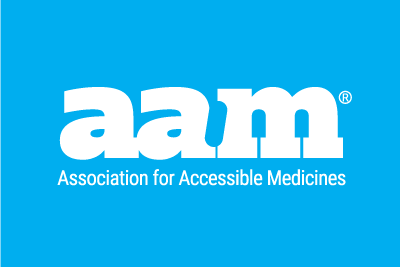Innovation is critical to the success of the entire pharmaceutical industry. Without innovation there could be no generic pharmaceutical or biosimilar medicines for patients.
The Issue
The patent system exists to protect the intellectual property of innovators. Too often, however, some brand-name drug companies attempt to patent features of drugs that do not represent true innovation. Some attempt to bury competition from generic and biosimilar drugs indefinitely by finding ways to repackage existing inventions in later patents. These “patent thickets” chill competition by discouraging competitors from entering a market because of the exorbitant cost of litigating meritless patents.
A recently issued report by I-MAK shows the extent of this problem. I-Mak found that, on average, across the top 12 grossing drugs in America:
- There are 125 patent applications filed and 71 granted patents per drug.
- Branded drug prices have increased by 68 percent since 2012, and only one of the top 12 drugs has actually decreased in price.
- There are 38 years of attempted patent protection blocking generic competition sought by drugmakers for each of these top grossing drugs – or nearly double the 20-year monopoly intended under U.S. patent law.
- These top-grossing drugs have already been on the U.S. market for 15 years.
- Over half of the top 12 drugs in America have more than 100 attempted patents per drug.
AbbVie Inc.’s rheumatoid arthritis drug HUMIRA® (adalimumab) is the best-selling prescription drug in the world, with over $12 billion in U.S. sales per year. Humira was approved in 2002, and it now makes more money annually than all of the NFL teams, combined. The initial patent on the product expired in 2016, but within the three years before expiration, the company applied for and obtained over 75 patents that would extend its monopoly to 2034 – and keep this enormously expensive treatment inaccessible to many patients. To break AbbVie’s perpetual monopoly, companies must engage in time-intensive, expensive patent litigation, thus allowing the drug company to continue to profit as a result of its tactics.
When the U.S. Patent & Trademark Office (PTO) grants pharmaceutical patents that do not represent true innovation, drug costs remain high.
The Solutions
Congress and the President can take steps to address abuses of the patent system that threaten the generic and biosimilars competition.
Protect and Preserve the IPR System
Inter partes review (IPR) is an important tool that Congress enacted as a bipartisan solution to allow the PTO to eliminate bad patents efficiently. Patent examiners face heavy caseloads, spending an average of just 19 hours on each patent. There are many advantages to allowing the PTO to police its own patent-granting decisions: PTO reexamination of granted patents is cheaper, faster and benefits from the greater technical expertise PTO holds to review patents than generalist judges. When IPR eliminates an invalid patent, it cancels a government-granted monopoly and allows free market competition to lower prices.
Harmonize Hatch-Waxman with the IPR Process
Congress could also harmonize the Hatch-Waxman system with the IPR process by treating a final written decision of the Patent Trial and Appeal Board as equivalent to a court decision for key Hatch-Waxman purposes. Hatch-Waxman was written at a time when most invalidity decisions came from courts. The patent litigation provisions in Hatch-Waxman could be updated to reflect the reality that many patents are also challenged in post-grant proceedings. A patent that has been held invalid in an IPR should no longer be the basis for a stay on FDA approval.
Improve the Biosimilars Process
In the biosimilars arena, Congress could take steps to provide a date certain for biosimilar competition upon expiration of the Biologics Price Competition and Innovation Act market exclusivity by, for example, ensuring that patents do not create a bar to biosimilar competition upon expiration of the 12-year term of exclusivity.
Congress could also take steps to ensure that the so-called “patent dance” commences earlier, so that biosimilars developers must not wait for the filing of a biosimilars application to commence patent litigation that slows biosimilar market entry. For example, Congress could allow for the initiation of patent litigation at the point when a developer has a Type III development meeting with FDA. This shift would accelerate the timeline of litigation and permit biosimilars to be marketed sooner, speeding their savings to patients.
Stop Gaming the Patent Litigation Process
Another issue generics and biosimilars developers face is that some brand-name drug companies often hold some patents in reserve. This tactic enables them to threaten generic and biosimilar companies with litigation, carrying the possibility of massive damages liability later in the process. Congress could enact legislation that forces brand drug companies to assert all relevant patents promptly so that generic drug and biosimilar drug developers can cut through pharmaceutical patent thickets faster.

